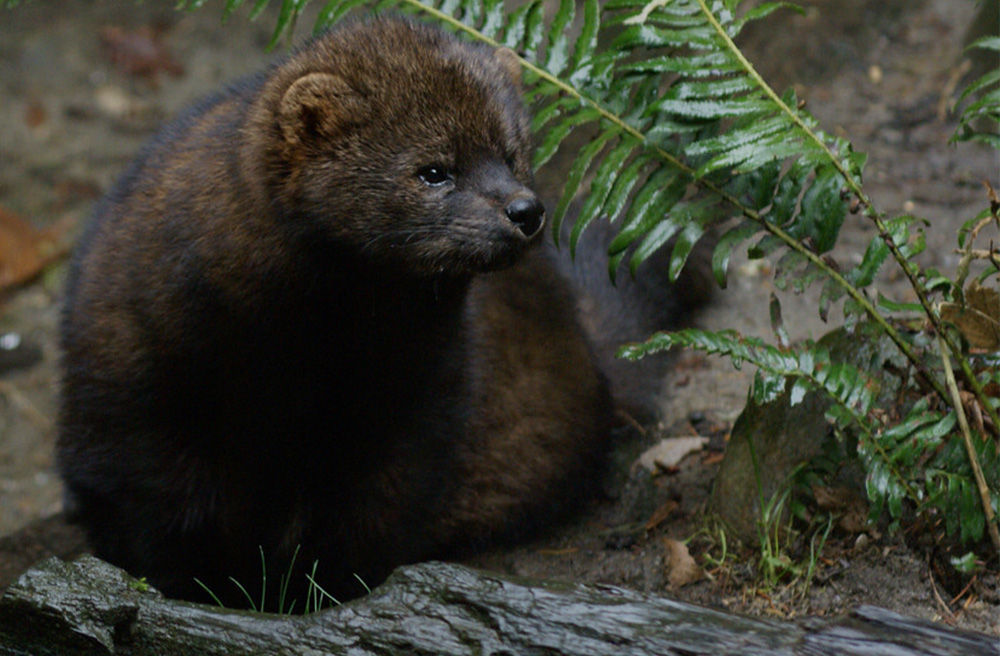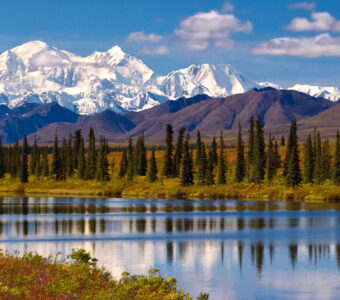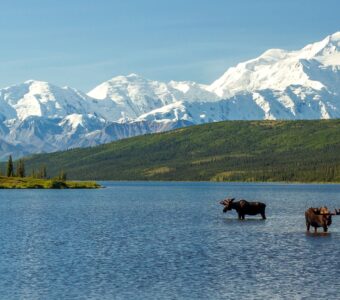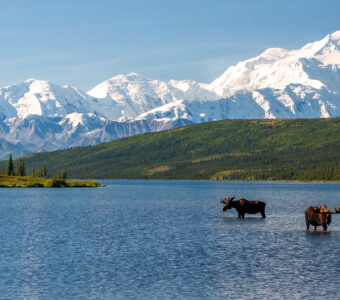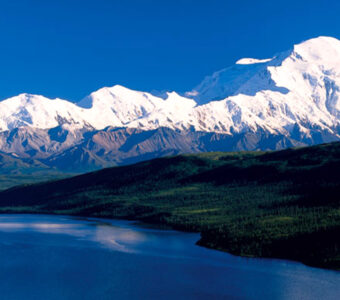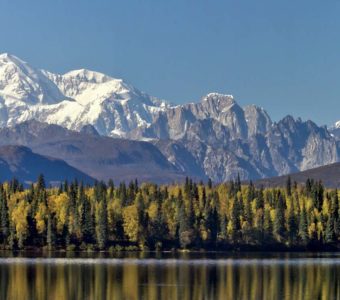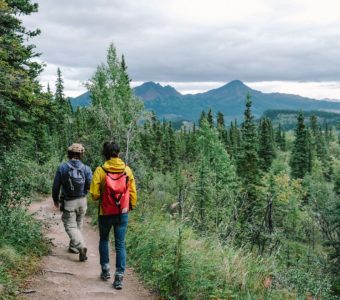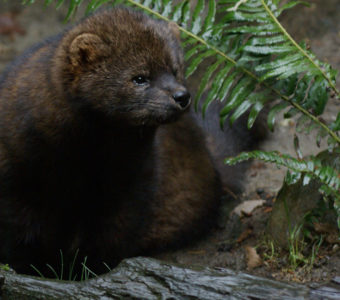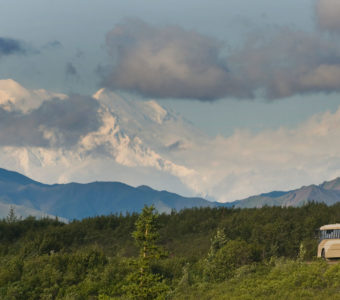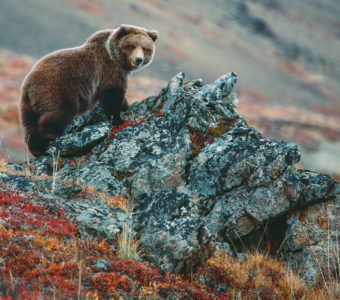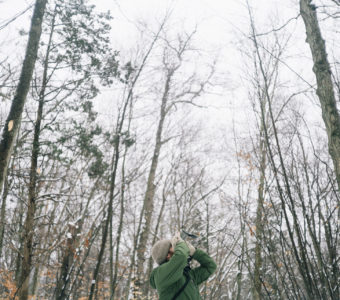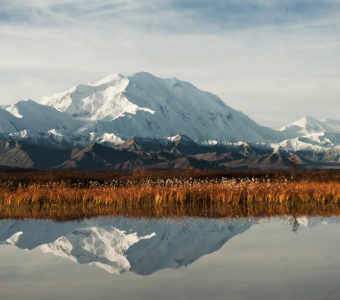Our national parks give us a multitude of untapped natural resources tucked away in their lakes, mountains, and deep forests. It’s never been more important to think about wilderness conservation and the preservation of our natural assets. We here at Nation’s Vacation want to recognize a few endangered species that reside in our nation’s parks and offer resources in how you can play a part in their protection.
Golden Eagles: Yellowstone & Denali National Park
The average wingspan of a Golden Eagle is between 5.9 - 7.9 feet.
Golden eagles are large, long-lived birds that live across the western USA, especially in Wyoming, and in Alaska. Denali National Park & Preserve has one of the highest densities of nesting Golden Eagles in North America. This area has been designated by the National Audubon Society as an Important Bird Area due to the nesting population. These majestic birds are on the endangered list because there have been growing concerns about their population status. Studies show that their population might be dwindling because of the increase in energy development within the area and an increase in human activity in places like Yellowstone National Park, and human disturbance and loss of habitat in Denali National Park.
To better understand the current golden eagle population and the trends related to this species, park biologists began a focused study in Yellowstone National Park in 2011. This study located 28 golden eagle territories inside Yellowstone alone, 20 just within the northern range. The population in this territory has been consistently high, but the golden eagle’s productivity has been low, because of the sporadic nesting attempts and little nest success. The low productivity seen in the Yellowstone golden eagle population shows that now more than ever they are dependent on outside immigration to continue to populate the area and survive.
Wyoming has initiated a working group to continue to explore and understand the golden eagle population; studying their food habits, toxicology, survival, and movement within and outside the park.
Scientists in Denali National Park & Preserve are also monitoring the reproductive habits of the golden eagle and have stated, “The future of Denali’s golden eagles hinges on our ability to collaborate with others to reduce mortality by human-driven causes, and conserve habitat across their year-round range, not just in Denali.” Success in managing populations for these birds is dependent on how conditions and events outside of Denali. Reproductive habits, environment, and migration continue to be monitored.
Sierra Nevada Yellow-legged Frog: Yosemite National Park
Sierra Nevada Yellow-legged frogs are rarely found further than 3 feet from the water.
California is home to abundant wildlife, from ocean shores teeming with fish along Asilomar State Marine Reserve to populous wildlife in Yosemite National Park. Among Yosemite’s Merced River in the Sierra Nevada Yellow-legged Frog, a once-abundant amphibian whose population rapidly began to decline in the mid-2000s. Because of the decline and detrimental impact on its ecosystem, serving as both predator and prey, these frogs were listed as an Endangered Species under the Federal Endangered Species Act.
Studies have shown multiple factors attributed to the frog’s decline, including the introduction of fish in Yosemite’s naturally fishless waters, and an amphibian chytrid fungus which disrupts the frog’s ability to breathe and its internal water balance. However, beginning in 2006, a project supported by the Yosemite Conservancy, began to re-introduce the frogs in the fishless lakes. Additionally, entrance-fee funds were implemented to restore the frog’s habitat. The now fishless lakes are being re-populated by the frogs and other native species.
The Pacific Fisher: Olympic National Park
Other known monikers of the Pacific Fisher are wejack, wood-otter, fisher cat, and pekan, to name a few.
The Pacific Fisher, a member of the weasel family, is native to the pacific northwest, including the Olympic Peninsula. This furry woodland animal began to see a decline in population due to habitat loss from the logging industry and urbanization of the area, as well as fur trapping. Due to this decline, there was an eventual disappearance of the fisher in the area.
Federal and state agencies formed an alliance to restore the fisher’s habitat and ultimately reintroduce the fisher back into the area. The fishers were brought from British Columbia and released into Olympic National Park. Scientists are now monitoring the new fisher population in the area to ensure sustainability and reproduction.
In recent news, the fishers have been determined as an Endangered Species in the southern Sierra Nevada region but were denied the status from Northern California to the Canadian border.
The California Condor: Lake Powell
The impressive wingspan of a California condor.
With a 9 to 10 foot wingspan, the California condor is considered one of the world’s rarest and largest birds. The condor is in the vulture family and closely related to the turkey vulture and Andean condor. Condors have an impressive lifespan and can live up to 60 years. In Southern California, during the early ’80s, the condor’s habitat began to be harmed due to modern destruction, lead poisoning, and poaching of the bird leading to a decline in population. Due to this disruption, the condor was listed as endangered in 1967, prior to the Endangered species act in 1973.
Due to the major decline of the condor, the remaining birds were captured for captive breeding. In 1996, the California condor was released back into the wild in the Glen Canyon area, near Lake Powell. There are now over 500 condors listed in the wild, but they still face danger because of lead exposure, powerlines, and loss of habitat. However, there has been a slight incline in population since 2007, where 300 were listed in the wild. Since their release, these birds can now be found in California, Arizona, Utah, and Baja California.
Sierra Nevada Red Fox: Lake Tahoe
A rare sighting of the Sierra Nevada Red Fox.
The Sierra Nevada red fox is known as the largest of the true foxes and also the move widespread. One of the areas where this red fox resides in the Lake Tahoe area. This fox has a high risk of extinction because of its small population size, genetic diversity, and threats to its habitat. Some of these threats include logging, livestock grazing, and offroad vehicles.
According to the Pacific Forest Trust states there are about 50 Sierra Nevada red foxes in the wild in California, Oregon, and Nevada. Due to the fox’s elusive behavior and remote habitats, not much is known about the fox and they are hard to study.
How To Help:
There are many great ways we can all do our part in protecting endangered species and preventing new species being added to the list. Here are a few ways to get involved:
- Learn about the endangered species and threats in your area
- Incorporate sustainable practices and reduce your carbon footprint
- Volunteer your time to improve your local ecosystems
- Become an advocate
- Find an organization who supports the cause to donate to
